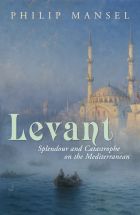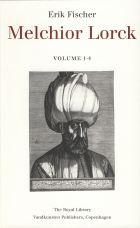Buy or gift a stand-alone digital subscription and get unlimited access to dozens of back issues for just £18.99 / $18.99 a year.
Please register at www.exacteditions.com/digital/cornucopia with your subscriber account number or contact subscriptions@cornucopia.net
Buy a digital subscription Go to the Digital EditionJohn Carswell introduces the mesmerising entries in this year’s Ancient and Modern Prize for original research. The competition was hot – from edible diplomacy to Byzantine Buenos Aires – but the winner is the doyen of Asian tent studies
There were an astounding 29 submissions for the most recent Ancient and Modern prize. As usual, they were submitted to the anonymous judges, and when the results were collated there was unanimous agreement on the winner, Peter Andrews, whose application was exemplary. The choice of Harriet Rix for the Godfrey Goodwin Prize was also unanimous. As the judges never meet (there are no funds for this) there was no possibility of collusion.
Entrants must be under 26 or over 60, and it was a closely run race. If we had the resources, we would fund all the projects.
THE WINNERS
Dr Peter Alford Andrews, 77, received the first prize of £1000. His proposal was to visit Powis Castle in Wales and the Museo del Ejército in Toledo, to examine and record the tent of Tipu Sultan (1725–50) and the Tienda de Campaña (1535) – probably the oldest Indian tent in the world.
Harriet Rix, 23, won the Godfrey Goodwin Prize worth £500. She is setting off in the footsteps of Francis Vernon, 17th-century botanist, astronomer, antiquarian, on the Turkish leg of his ill-fated voyage around Europe and the Ottoman and Safavid Empires.
HONOURABLE MENTIONS
Alex Baltazi, 77 The history and culture of the Levantines (migrant Westerners), and their contribution to the Ottoman Empire.
Pam J Crabtree, 61 Achaemenid ritual and feasting at the Kınık Höyük, in Cappadocia.
Viviana Delgado, 22 The undervalued role of the Ottoman Empire in the Renaissance and Enlightenment.
Christina DiFabio, 21 Fountains in public memory in Hellenistic and Roman Anatolia.
Pauline Dominik, 25 Rediscovering Polish life in 19th- and early-20th-century Istanbul.
Füsun Ertuğ, 61 The beauty, simplicity and diversity of Anatolian basketry and mat-making.
Matthew Elliott Gillman, 23 Ottoman ambition and the Tarih-i Hind-i Garbi (History of the West Indies), a 16th-century textual and art history curio.
Bruce Healy, 66 Sudden design appropriation of Khorasan to Caucasian carpets after 1722 and the Afghan conquest of Persia.
Sister Janet Hotine, 85 The East India Company’s lucrative trade in jewels.
Rosalind Janssen, 61 Harriet Martineau’s 1847 encounter with a female Theban mummy.
Michele Kidwell, 69 The transcendent beauty of the sculptures of Aphrodisias.
Lindsay Lochman, 61 Sacred ruins, landscapes and ancient sybils on Turkey’s western coast.
Bernard McWilliams, 64, and Jennifer Gibbon, 63 The Hungry Archaeologist’s Guide to Lycia: 118 archaeological sites and nearby restaurants.
Gérard J Maizou, 66, and Dr Katharina Müller, 63 The handicraft of oya (Turkish decorative edgings), a timeless fashion motif.
Lois Martin, 61 Net jaquars and rattlesnake skirts – interlinked fabrics in ancient Mexico.
Aimee Miles, 24 Maritime life and settlement in Hellenistic and Roman Lycia.
Clive Rogers, 64 The great hans of Istanbul – commercial gravitas in secular architecture.
Dr Geoffrey Roper, 72 The aesthetics of Ottoman printed books 1706–1922.
Daniel Schavelzon, 62 El Pórtico Bizantino: a mystery Byzantine building in Buenos Aires.
Dr Elizabeth W Shelton, 72 Rev Henry John van Lennep, 19th-century American missionary, Orientalist, artist.
Ulya Soley, 23 Aesthetic tradition and human representation in Kütahya ceramics.
Melissanthi Spei, 24 Folklore and fashion – social and cultural issues.
Dr Janet Starkey, 65 The Scottish physician brothers Alexander and Patrick Russell and The Natural History of Aleppo (published in 1756 and 1794).
Tunç Tayanç, 71 The history and development of the coffee cup, gleaned from literature, auction catalogues and paintings.
August Siena Thomas, 22 A cheese to keep the peace – edible diplomacy from Byzantium to the Republic of Turkey.
Gizem Tuğrul, 23 Disappearing traditional handicrafts in Mardin.
Susannah Worth, 61 The iconography of embroidered Ottoman Bindalli gowns.
The Ancient and Modern Prize is sponsored by Cornucopia and Halı magazines, with contributions by Bonhams, Christie’s and Sotheby’s. Applicants must be under 26 or over 60.
ancientandmodern.co.uk to apply for next year’s award.
With 19th-century Istanbul in thrall to the music of Italy, an extraordinary theatre was born, the creation of one rather ‘odd character’. Emre Aracı tells a tale of comedy and tragedy
Black musicians, White Russian princesses, Turkish flappers… During the Jazz Age, Beyoğlu was a ferment of modernity and decadence. By Thomas Roueché
For 700 years, the European quarter was home to Genoese, Jews, Greeks and many others. Norman Stone charts the district’s changing fortunes
Maureen Freely recalls the artists and writers who enlivened her childhood with their flamboyant bravado and unspoken sadness
In the very thick of the city, with its fret and fuss, belching traffic and urban sprawl, lies a glade scented with linden blossoms. Here the young Sultan Abdülmecid built a jewel of a palace, grand but tiny, which is still a green oasis and place of escape. By Berrin Torolsan
Until the 20th century, visitors would sail serenely into Istanbul to disembark opposite the Topkapi. After this spectacular start, reality would set in. By David Barchard
For more than two centuries the Ottomans were obsessed by the elegance of the tulip and grew over 3,000 varieties, each characterised by almond-shaped petals drawn out into an exaggerated taper.
With its hundreds of different shapes, pasta is today one of the most widely consumed and enjoyed of all the staples
Across the Golden Horn from the Topkapı and the bazaars is the European City, where fortunes have for centuries been made and lost.
Patricia Daunt extols the palatial embassiess that adorn the heights of old Pera. Photographs by Brian McKee
As the old European quarters flourished in their seclusion, Sultan Abdülmecid had a dream – and expanded to the east
The Sakip Sabanci Museum has just celebrated 600 years of diplomatic relations between Poland and Turkey. Jason Goodwin finds deep-rooted affinities between the two countries
 Issue 51, Summer 2014
Istanbul Unwrapped: The European City and the Sultan’s New City
Issue 51, Summer 2014
Istanbul Unwrapped: The European City and the Sultan’s New City








Cornucopia works in partnership with the digital publishing platform Exact Editions to offer individual and institutional subscribers unlimited access to a searchable archive of fascinating back issues and every newly published issue. The digital edition of Cornucopia is available cross-platform on web, iOS and Android and offers a comprehensive search function, allowing the title’s cultural content to be delved into at the touch of a button.
Digital Subscription: £18.99 / $18.99 (1 year)
Subscribe now